Unlike other artifacts now sought by collectors, movie posters and lobby cards were never meant to be in the hands of the public. They were manufactured strictly for publicity purposes, and most were discarded after the film had finished its run at a given theater.
Theater owners, particularly in big cities, were encouraged to buy an enormous variety of posters and related publicity for displays to catch the eyes of passers-by. Before the 1940s these items were almost always purchased, then trashed. There are rare instances known of a theater owner or projectionist saving them. In one instance in Canada thousands of (what proved to be) invaluable 1930s posters were carefully taken down and stored, only to be discovered years later by workers doing renovations. Most survived simply by accident.
Starting in the early 1940s, studios began using a consolidated printing and distribution method (National Screen Service) to handle their posters. Now theaters began to buy publicity goods and return them for a credit. This allowed National Screen Service to use and re-use posters, rather than print new ones. Regional warehouses were set to handle the logistics. Starting with this change posters survived in greater numbers because they were of some possible value down the road to the N.S.S.
There are very few instances of movie poster collecting known before the nostalgia boom of the 1960s, but many caught on quickly thereafter. Generally, finding the posters themselves was the difficulty for collecting pioneers, as a network had not yet developed to connect buyers with sellers. In Hollywood and New York, there were specialty shops where you could stumble upon some, and at least three poster exchanges were known to sell off their unwanted back inventory. Naturally, as posters became a commodity sought by the public, clusters of collectors grew around these areas. Texas and Oklahoma, Portland and Memphis became small hotbeds of early collectors, as well as the major metropolitan areas, because of their exchanges.
The internet, of course, has been a boon to all areas of commerce. There’s no longer a mystery to where to find movie posters or anything else, you just need time to sift through the endless offerings on eBay and other online sites. The chances of finding just what you’re looking for have increased a thousand fold.
Collateral damage is the demise of the great old poster shops like Cinemonde in San Francisco and, most recently, Movie Star News in New York. It’s also opened the doors to a slew of poster reproductions being sold as originals at a level unimagined. Buyers of more contemporary titles have been the main target, though there was a massive scandal aimed at collectors of Universal horror. Today one would be advised to do some basic research before jumping into unknown territory.
Now after fifty years of exhaustive searches for hidden poster treasure troves, one would image that every conceivable title would have surfaced. But that’s the beauty of collecting film posters. Here at the Motion Picture Arts Gallery (after thirty years), we still encounter posters we have never seen before. Because of scarcity there is always something new to discover.
This page is set up to answer as many questions as possible, concerning the ins and outs of motion picture art collecting, usually called poster collecting.
Clicking on the links will bring you to a fuller explanation of the processes.
- The basics of collecting
Poster sizes and descriptions - The MPAG quality standards grading system
Recommended reading on collecting




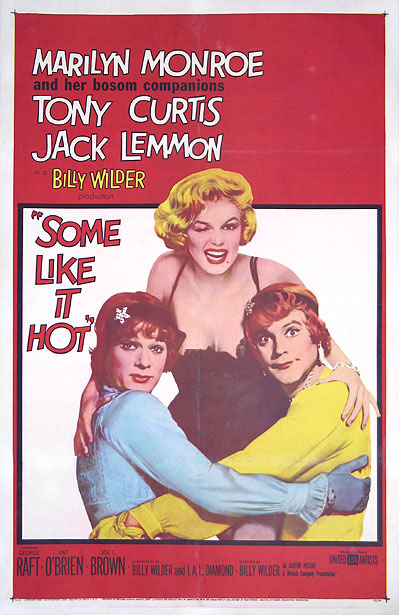
The Basics of Poster Collecting
What to collect
There are no set rules when it comes to deciding what to collect. Go with what you like. There are many people who will only purchase motion picture art by format, such as lobby cards. Others opt to collect based on the country of origin, for example, all Italian posters. Still yet, some collectors prefer to collect only within a particular genre or certain preferred film titles. The combinations are limitless. The best way is to go with your instincts. (For additional information on collecting motion picture art, see below “Recommended Reading on Collecting”.)
Ordering a poster
When you are ordering a poster, know with whom you are dealing. Different dealers have different definitions of grading condition. Make sure you understand what is meant by “good condition”. Ask about tears, stains, scratches, pin or staple holes, fading or any retouches or repairs. While mounting a poster on linen-backing is a perfectly acceptable archival process, it can also be used to hide severe condition problems. (See below “Preserving Your Collection” for explanation about linen-backing process.) Make sure you know the condition of the poster before it was linen-backed and how much restoration has been done to it.
Another concern is how your posters will be packed and shipped. A poster may leave the shop in good condition, but due to negligent packing, arrive in worse condition. It is recommended to ask about the dealer’s/shop’s return policy in the unfortunate event that item is damaged or turns out to be in lesser condition than you imagined. Usual practice is to insure the package for the dollar value of the item. When returning items, consideration should be taken as to repacking. The best method is to use reinforced poster tubes, wrapping the posters in brown Kraft paper or plastic. For flat items, use a couple of thick pieces of cardboard, cut slightly larger than the item itself, and packing tape around the edges.
Re-issue vs. Reproduction
Many people are confused by the difference between a reissue and a reproduction of a poster. Many movies were released subsequent to their original dates. For instance, The Wizard of Oz was originally released in 1939, but it was re-released in ’49, ’51, ’55, etc. The studio produced ad campaigns for all of these releases. All of the posters (lobby cards, etc.) are designated as “re-issues”. Oftentimes, the artwork is completely different, but interesting and valuable in its own right. A reproduction, however, is simply a photographic copy of an original poster and has little or no value as a collectible.
How do you know the difference?
Many of our favorite movie posters are in such high demand that some companies have reproduced them. There are many ways to tell a reproduction from a re-issue/original poster. For instance, all 1- sheets posters before 1980 are folded, with very rare exception. (To find out about 1-sheets, see below “Standard Poster Sizes”.) A rolled, original poster of Gone with the Wind is simply nonexistent. Making sure the fine print is in focus is another indication of originality. If you have any doubt about authenticity, contact a trusted dealer to give you his or her opinion.
Preserving your collection
Like most art mediums, certain materials require the appropriate preservation methods to insure their longevity. One method in poster preservation is a process called “linen-backing”. This entails mounting the poster on a treated canvas material. A sheet of rice paper is sandwiched between the poster and canvas and adhered to both with an archival glue. This permits the process to be reversed at a future time, if needed. “Paper-Backing” is a similar process, except in lieu of canvas, the poster is mounted on thick archival paper. For the most part, posters are usually linen-backed.
One warning is clear: Never dry mount posters! Dry mounting yellows the paper and cannot be reversed. Accordingly, it devalues the poster. Another recommendation is to keep your collection out of direct sunlight. If you have a large collection both in size and quantity, you may want to invest in flat file drawers. They can be purchased in most larger art supply stores.
For display in frames, we suggest using UV filtered glass or Plexiglas. Also because of changes in weather, resulting moisture and mildew from condensation can wreck havoc on paper. Some solutions are to use a frame with “spacers” which elevate the glass or Plexiglas off the poster, or by having the poster matted professionally. Although we can’t recommend particular framing stores in your area, here is a website that might accommodate your framing needs: www.americanframe.com Otherwise seek out a reputable local framing store.
Most of all, use common sense when handling, storing and displaying your motion picture art collection. If you have any questions, please feel free to contact us and we’ll help you in any way we can.
Standard Poster Sizes
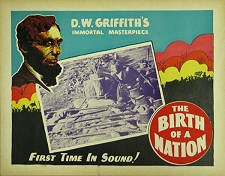
Window Card
14″ x 22″ (36 x 56cm) It has a large white border at the top where theatres would display dates for local showings.
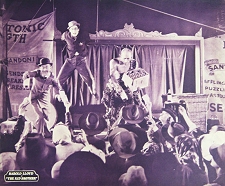
Jumbo Lobby Card
14″ x 17″ (36 x 42cm) Usually photographic and unlike Lobby Cards, they are usually borderless.
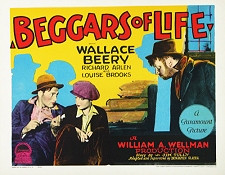
Title Card
11″ x 14″ (28 x 36cm) The first card of a lobby card set. It usually has a more complete list of credits and more elaborate Graphics.

1 sheet
27 “x 41”

Lobby Card
11″x 14″ (28 x 36 cm) Also known as ‘scene cards’. These cards were situated in the lobby of a theater and were originally distributed in sets of 8; they can be sold separately or in a set.
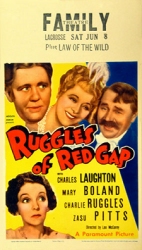
Mini Window Card
8″ x 14″ Same as a window card only smaller dimensions

Insert
14″x 36″ vertical

Half Sheet 22″x 28″ horizontal
11″x 14″ (28 x 36 cm) Also known as ‘scene cards’. These cards were situated in the lobby of a theater and were originally distributed in sets of 8; they can be sold separately or in a set.
3 sheet
41″x 81″
(104 x205 cm)
6 sheet
81″x 81″
(205 x 205 cm)
Subway
Varies
Grading Standards
The Motion Picture Arts Gallery uses the following system for grading the condition of our inventory:
Near Mint:
Never or hardly ever used condition. Colors are still vibrant with no marring of any kind.
Fine:
Colors very bright, perhaps pinholes in the border. Very lightly used. No major flaws.
Very Good:
Good color and overall very presentable appearance. It may have had some minor restoration.
Good:
Acceptably used condition. Pinholes or tape on border. Nothing significantly wrong with the actual image. Possible minor fading or scratches.
Fair:
Signs of usage. Perhaps separation along fold lines. Fading, excessive pin holes or possible border paper loss.
Poor:
Wear or damage evident. Paper loss, fading and/or marring.

Recommended Reading on Collecting
The Motion Picture Arts Gallery suggests the following books for more information on movie poster collecting:
- Reel Art: Great Posters from the Golden Age of the Silver Screen Stephen Rebello and Richard Allen, 1992
- Film Posters of the ’60s: The Essential Movies of the Decade Tony Nourmand and Graham Marsh (editors), 1999
- Film Posters of the ’70s: The Essential Movies of the Decade Tony Nourmand and Graham Marsh (editors), 1999
- Crime Scenes: Movie Poster Art of the Film Noir: The Classic Period: 1941-1959 Lawrence Bassoff; Foreword by Robert Wise, 1997
- Film Posters of the Russian Avant-Garde Susan Pack; Foreword by Christopher W. Mount, 1995
- Hitchcock Poster Art Tony Nourmand and Mark H. Wolff (editors), 1999
- Movie Poster Design: Film Graphics Mike Salisbury, 1999
We have some of these titles available. Larger bookstores either carry them or will order them for you.
For further information, please e-mail us through our Email Inquiry.
